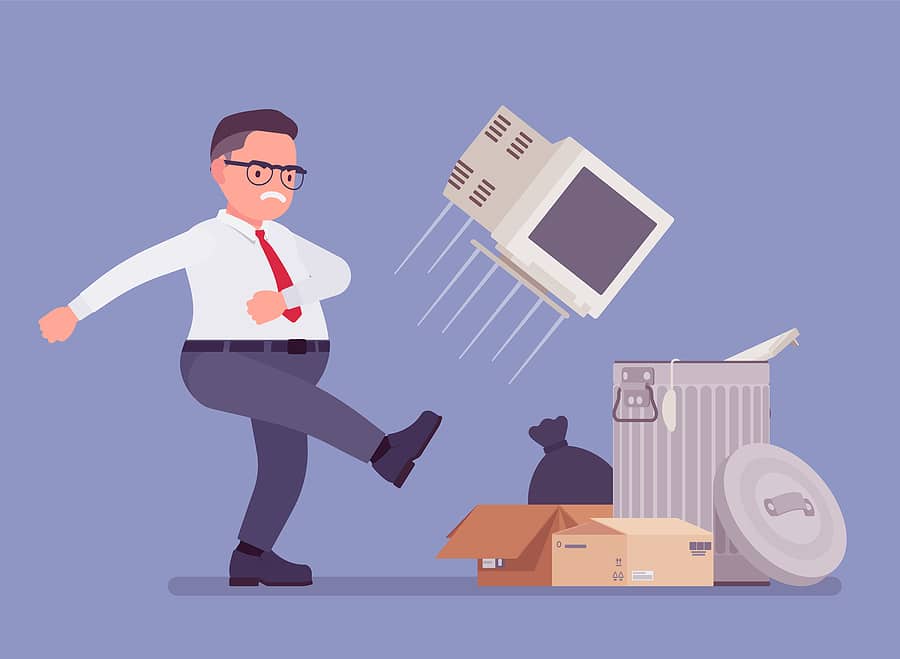Data Sanitization: It’s Not Just for End-of-Lifecycle

As a responsible business owner, you understand that you can’t just toss unwanted IT assets in the trash when you’re done with them. In addition to the environmental hazards this poses, dumping electronics that contain sensitive data can lead to nightmare scenarios like data breach and identity theft. It also fails to comply with consumer privacy laws, a host of industry regulations, and environmental standards.
In other words, your South Dakota company needs to protect itself and customers by practicing proper data sanitization, such as wiping devices before they are remarketed, or outright destroying them with professional hard drive shredding. What you may not realize, however, is that end-of-lifecycle isn’t the only time you may need to sanitize devices.
Sanitization, also referred to as data wiping or data erasure, is something you may have to do several times during the lifecycle of the average IT asset in order to maintain security. When and why is sanitization during asset lifecycle appropriate? Here’s what you need to know.
Security from the Get-Go
The idea of sanitizing new hardware before you integrate it into existing systems may seem antithetical, but before you write it off completely, consider the growing problem with supply chain attacks. These revolve around utilizing a weak spot, such as hardware or software, to sneak malicious code into a company’s network in order to, say, spy, steal data, shut systems down, and even spread remotely through your networks.
Although you should always screen partners who supply or install software or integrate new hardware in order to make sure their security standards meet your expectations, it’s not always easy to discover where everything comes from or what vulnerabilities you may be exposed to. You should always perform a security analysis, including cyber supply chain risk management when it comes to incorporating new IT assets, but this is especially important if your company purchases remarketed hardware to save money. In this case, data sanitization is a must.
Sanitization during IT Asset Lifecycle
There are also times during the lifecycle of devices when it’s appropriate to conduct data sanitization, primarily when devices change hands. When an employee leaves the company, you don’t just get rid of their IT assets like computers, laptops, smartphones, and even USB storage drives that are still usable. You’ll repurpose them by passing them along to other employees.
However, before you do so, it’s imperative that you thoroughly sanitize them in order to ensure new employees aren’t able to access data stored by previous users. By eliminating data that new employees shouldn’t have access to, you maintain secure operations and ensure that sensitive consumer and other data is kept safe.
End-of-Lifecycle
Naturally, you also want to engage in proper data sanitization in keeping with NIST 800-88r1 standards when it’s time to decommission IT assets for good. This could mean wiping devices in order to overwrite sensitive data with junk data (zeros or ones) if you plan to remarket devices, or you can simply opt for professional hard drive shredding and recycling to comply with applicable environmental and consumer privacy laws.
A certified ITAD service provider can assist you with either strategy. Contact the qualified team at SEAM today at 605-274-7326 (SEAM) or online to request a quote and get started.
SEAM provides IT recycling and data destruction services including onsite shredding and hard drive wiping to South Dakota, North Dakota, Minnesota, Iowa, and Nebraska.
Schedule a pickup or contact us for more information.





